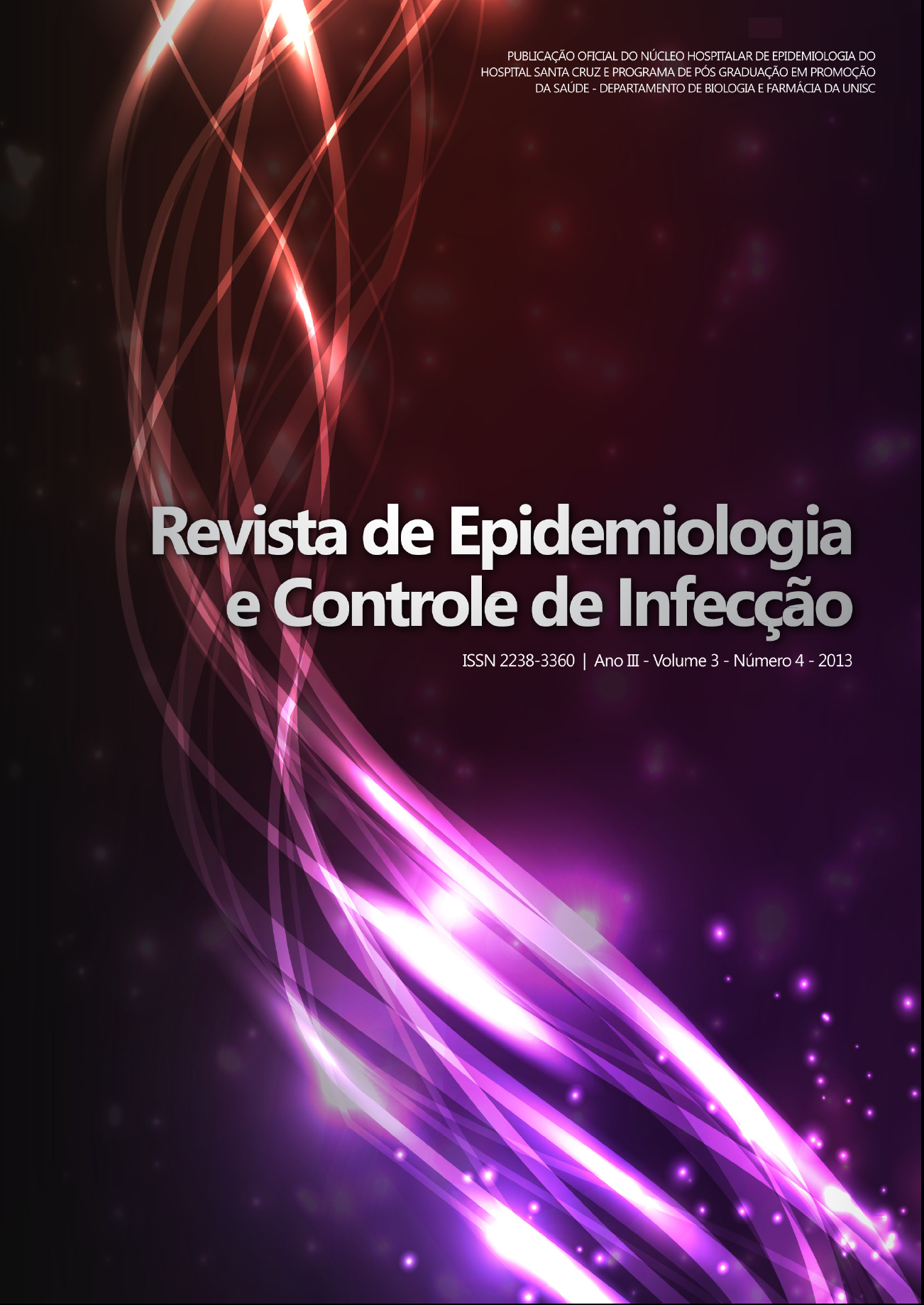Hospital-acquired infections associated with poor air quality in air-conditioned environments
DOI:
https://doi.org/10.17058/reci.v3i4.3798Abstract
Backgound and Objectives: Individuals living in cities increasingly spend more time indoors in air-conditioned environments. Air conditioner contamination can be caused by the presence of aerosols from the external or internal environment, which may be associated with disease manifestations in patients present in this type of environment. Therefore, the aim of this review was to assess the air quality in air-conditioned hospital environments as a risk factor for hospital-acquired infections – HAI – as the air can be a potential source of infection, as well as assess the exposure of professionals and patients to different pollutants. Material and Methods: A literature review was performed in the LILACS, MEDLINE, SCIELO, SCIENCE DIRECT databases, CAPES thesis database and Ministry of Health – Brazil, including studies published between 1982 and 2008. The literature search was grouped according to the thematic focus, as follows: ventilation, maintenance and cleaning of systems that comprehend the environmental quality standard. Discussion and Conclusion: Outbreaks of hospital-acquired infections associated with Aspergillus, Acinetobacter, Legionella, and other genera such as Clostridium and Nocardia, which were found in air conditioners, were observed, thus indicating the need for air-conditioning quality control in these environments.Downloads
Downloads
Published
How to Cite
Issue
Section
License
The author must state that the paper is original (has not been published previously), not infringing any copyright or other ownership right involving third parties. Once the paper is submitted, the Journal reserves the right to make normative changes, such as spelling and grammar, in order to maintain the language standard, but respecting the author’s style. The published papers become ownership of RECI, considering that all the opinions expressed by the authors are their responsibility. Because we are an open access journal, we allow free use of articles in educational and scientific applications provided the source is cited under the Creative Commons CC-BY license.


